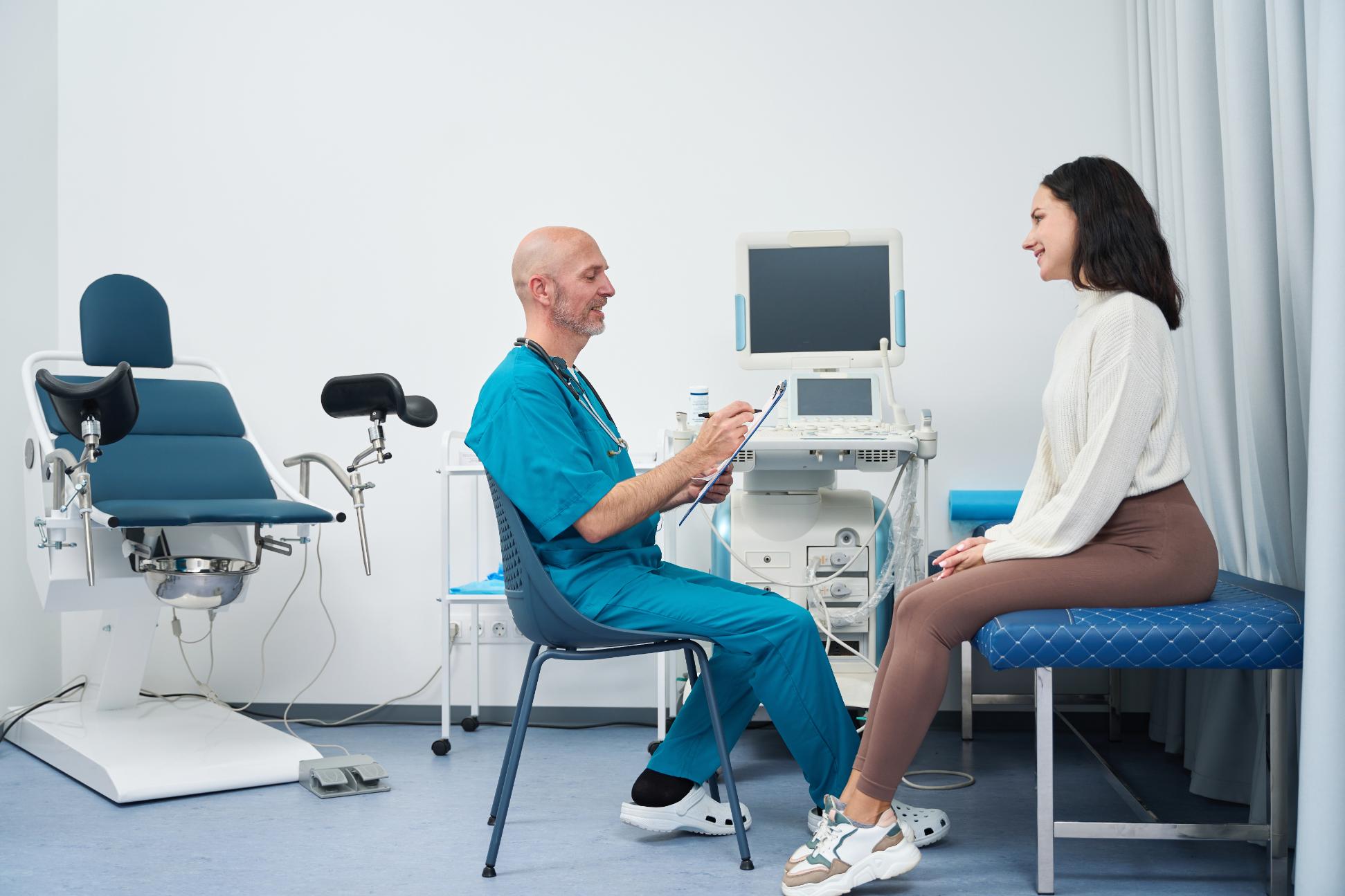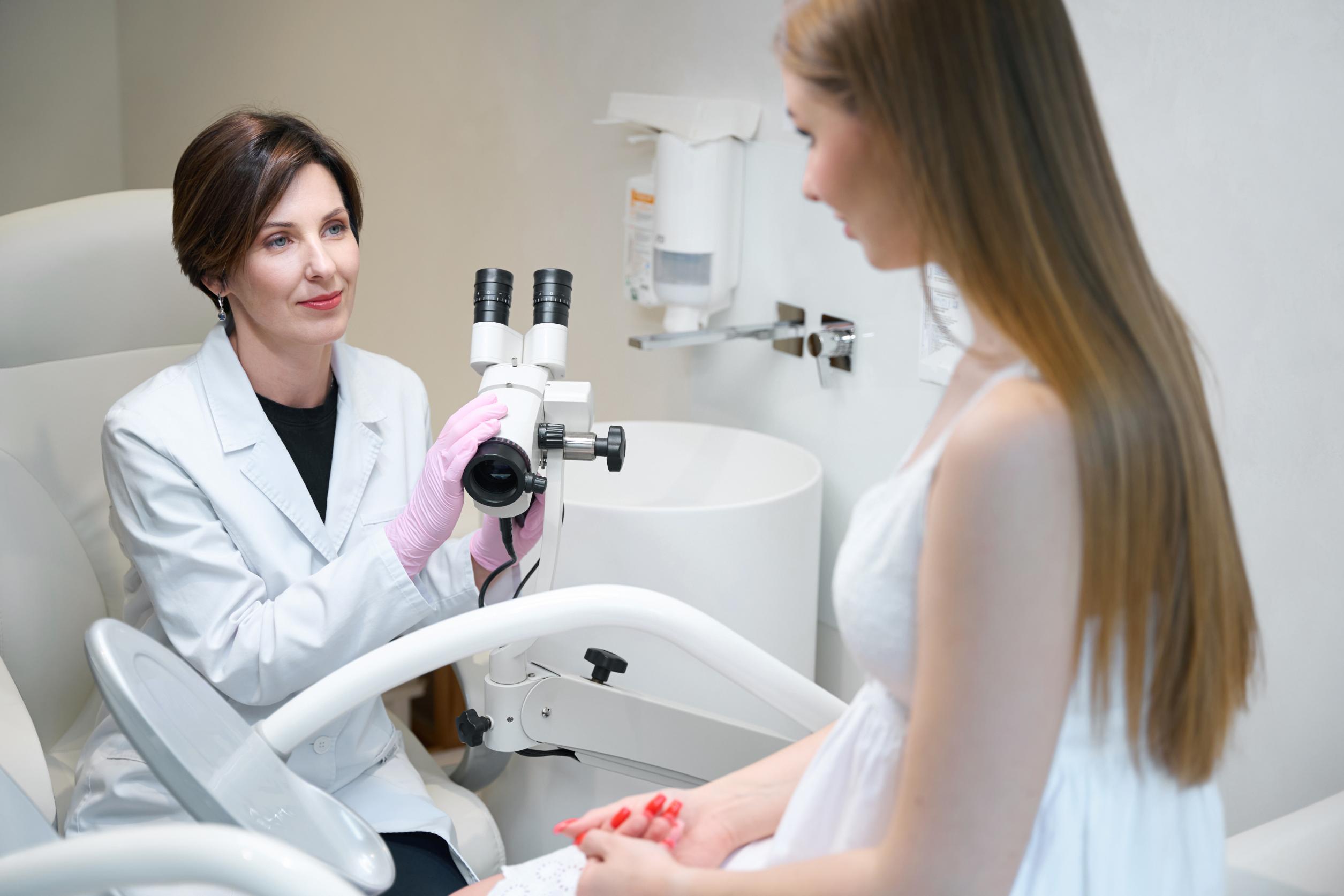
Dr. Ioannis K. Raptis is an accredited doctor (MIC II title) for performing high-degree difficulty laparoscopic and hysteroscopic surgeries by the German Society for Gynecological Endoscopy (AGE). He is certified (AGUB I title) for diagnosing and treating complex urogynecological diseases and pelvic floor disorders by the German Society for Urogynecology and Plastic Pelvic Floor Reconstruction (AGUB). Doctor’s CV >
What is uterine prolapse?
Uterine and vaginal prolapse is the gradual sliding of the uterus and/or parts of the vagina towards the vaginal entrance, occurring when muscles and ligaments relax and are unable to maintain the normal anatomy of the area. Along with the uterus, other neighboring organs, such as the urinary bladder and intestines may also recede.
Common causes include multiple childbirths with injuries during labor, chronic pressure in the abdominal area (often due to constipation, obesity, or standing upright) and aging. It is about a common gynecological problem, with research showing that 4 out of 10 women experience it, mainly after menopause.


What are the symptoms of uterine prolapse?
The symptoms are not always indicative of the severity of the problem. It is possible for women who have a minor prolapse to suffer from intense discomfort, while at the same time, patients with advanced-stage prolapse may only present mild symptoms. These may include:
- A feeling of a foreign body or weight in the vagina
- Problems during urination or bowel movements
- Discomfort and pain during sexual intercourse
- Pain in the lower abdomen or back
What are the benefits of laparoscopic Pectopexy as a treatment for uterine prolapse?
The treatment for early-stage uterine and vaginal prolapse can be conservative and includes specialized pelvic floor exercises combined with possible weight loss. In extensive prolapse, the use of vaginal pessaries can be a good solution for patients who cannot undergo surgery (due to old age, severe comorbidity, etc.) or as a temporary solution for the period between diagnosis and surgical intervention.
In cases where surgical treatment is indicated, laparoscopic Pectopexy is the most modern and safe method for the upliftment of the female vagina.
During laparoscopic Pectopexy, the vagina is elevated using a specialized, non-absorbable mesh, which is endoscopically secured to the pelvic sidewalls, restoring the correct anatomy and eliminating any symptoms. The placement of the mesh on the sides of the pelvis and not at the base of the spinal column, as the older method (laparoscopic sacrocolpopexy) stipulates, removes the risk of injury to vessels and nerves in the area and does not cause chronic abdominal pain in the patient. Finally, in contrast again to the older method, the new method is safely implemented in obese patients,too.


What tests are necessary for the treatment for uterine prolapse?
A urogynecologist has the ability to accurately diagnose the type and severity of uterine and vaginal prolapse with the help of medical history, a specialized clinical examination and a specialized ultrasonic check of the patient’s pelvic floor.
What is the recovery like after laparoscopic Pectopexy?
Recovery after laparoscopic Pectopexy is painless and immediate, with the patient returning to her daily activities within 24 hours.
The first six weeks after the surgery is a very important period, during which the patient should not engage in any sexual activity and ideally should not lift any weight over 10 kilograms.
Why laparoscopic treatment for uterus and vaginal prolapse by gynecologist Ioannis Raptis?
- Ioannis Raptis is an accredited doctor (MIC II title) for the performance of high-degree difficulty laparoscopic and hysterectomy operations by the German Society of Gynecologic Endoscopy (AGE).
- He is certified (AGUB I title) for the diagnosis and treatment of complex urogynecological diseases and pelvic floor pathologies by the German Society of Urogynecology and Pelvic Floor Plastic Reconstruction (AGUB).
- The doctor introduced the method and term of laparoscopic Pectopexy for the first time in Greece in November 2017. This method is a well-documented, modern and safe method for uterus and vaginal uplift.
- During the surgery, the use of the top-quality and fully biocompatible DynaMesh®-PRP soft mesh is applied, specially designed and certified for this operation. The patient receives a corresponding certificate.
- The doctor is supported by a specialized medical team of steady collaborators (an anesthesiologist, assistant surgeons, a nurse).
- The fragmentation of the uterus intracorporeally (in cases of sub hysterectomy) is performed exclusively within the innovative, closed “Endo bag” system, which protects the patient from tissue dispersion or potential malignancy.


With the assurance of the German Society of Gynecologic Endoscopy (AGE) and the German Society of Urogynecology and Pelvic Floor Plastic Reconstruction (AGUB).
